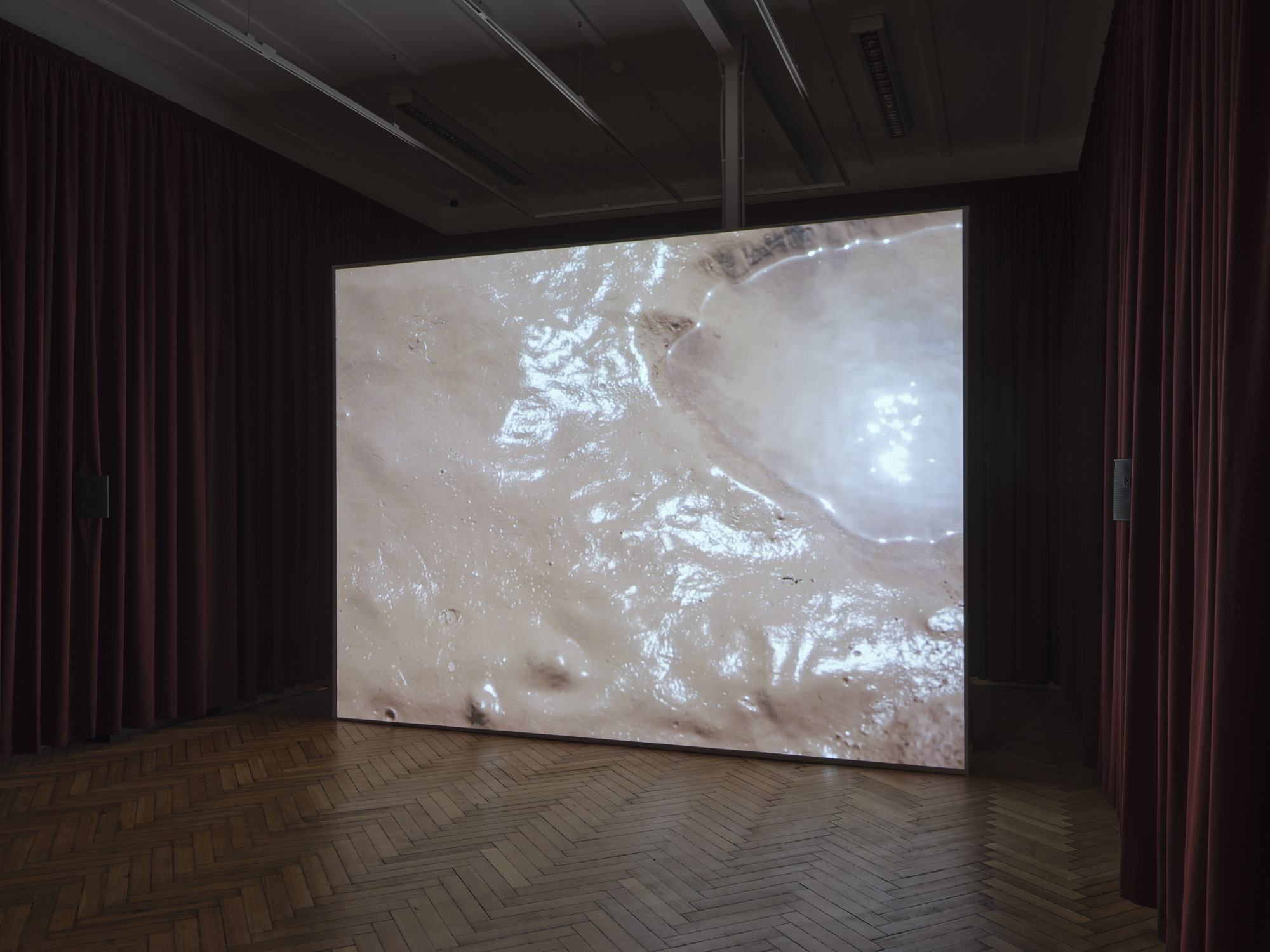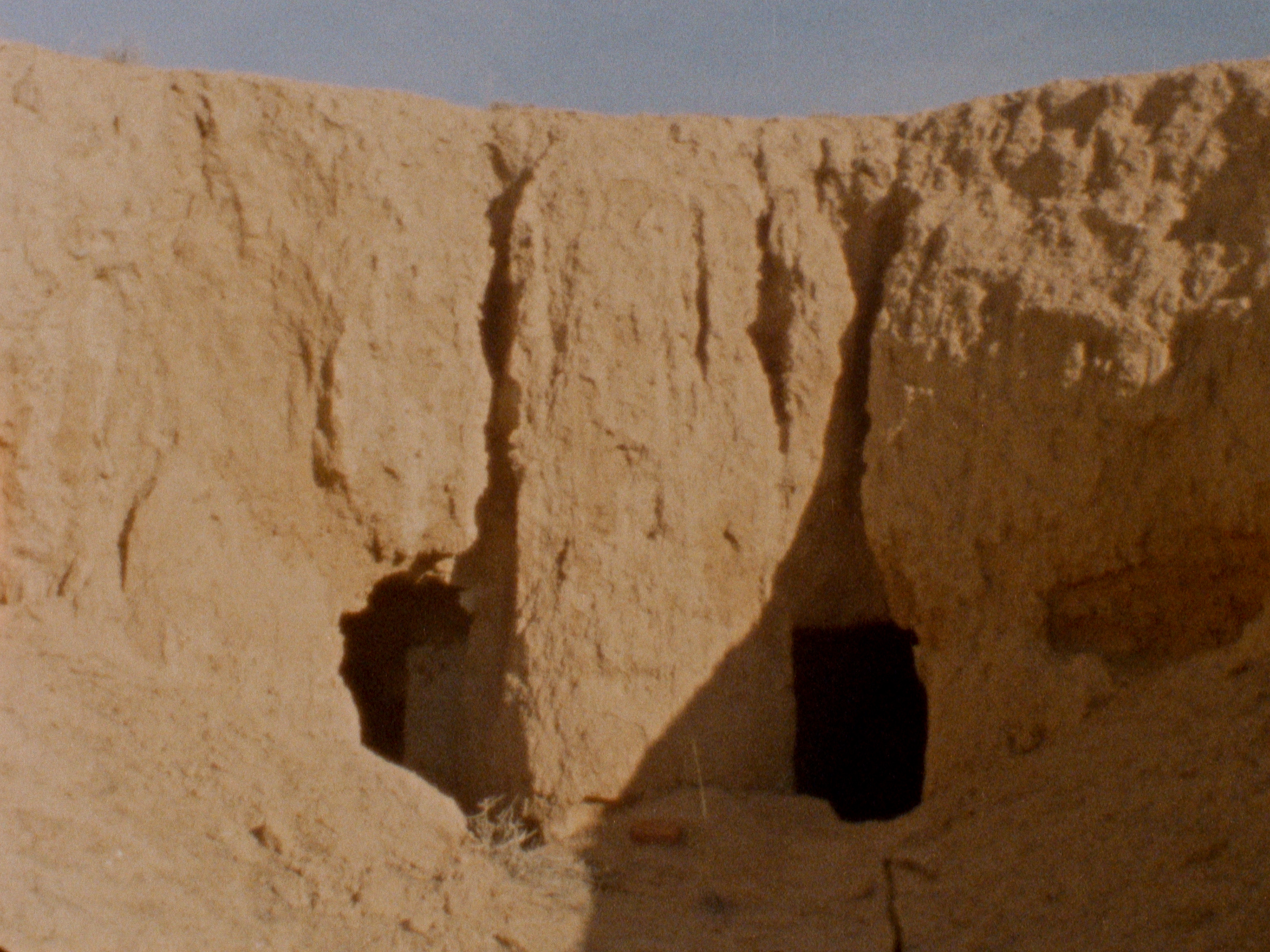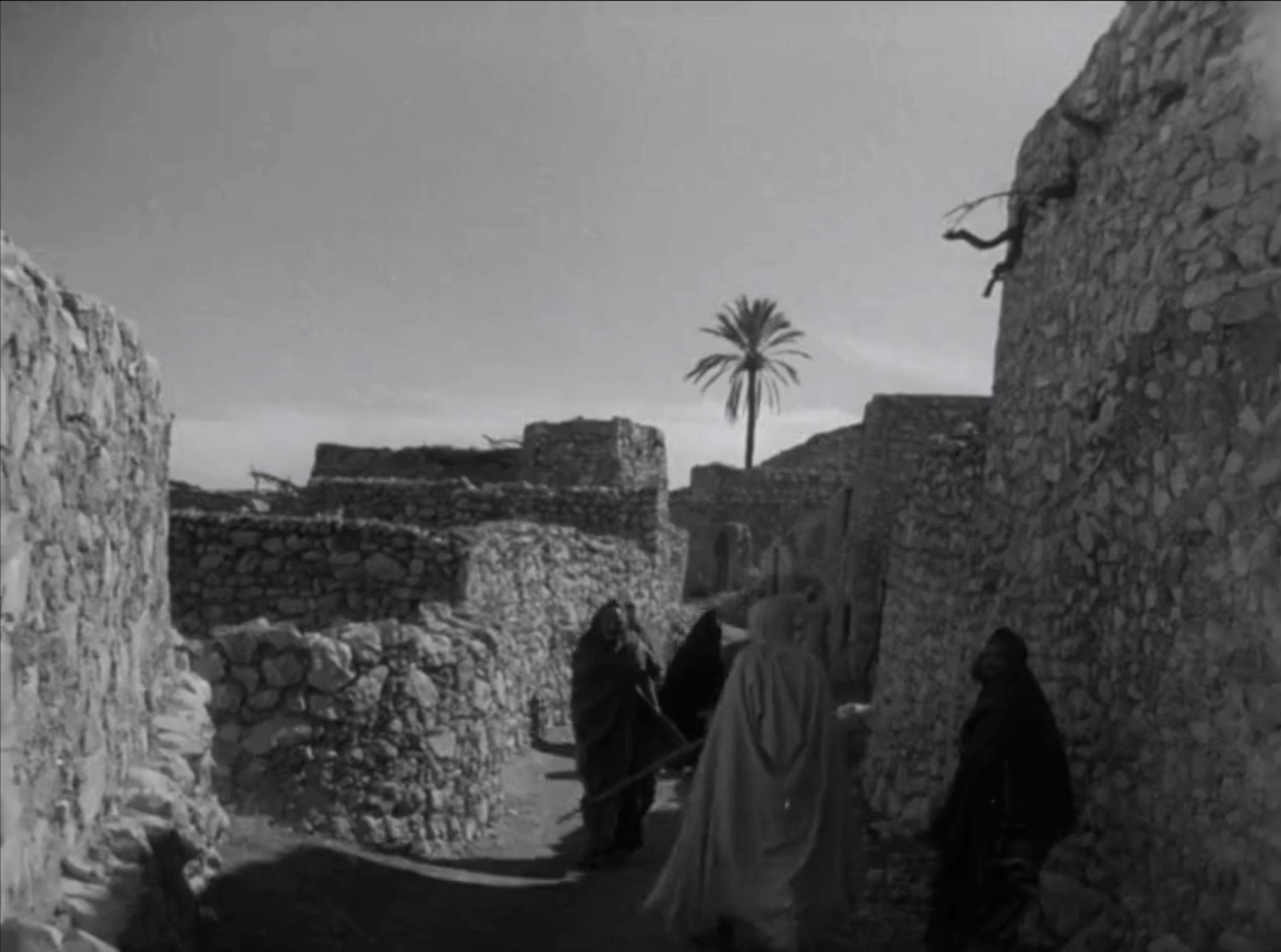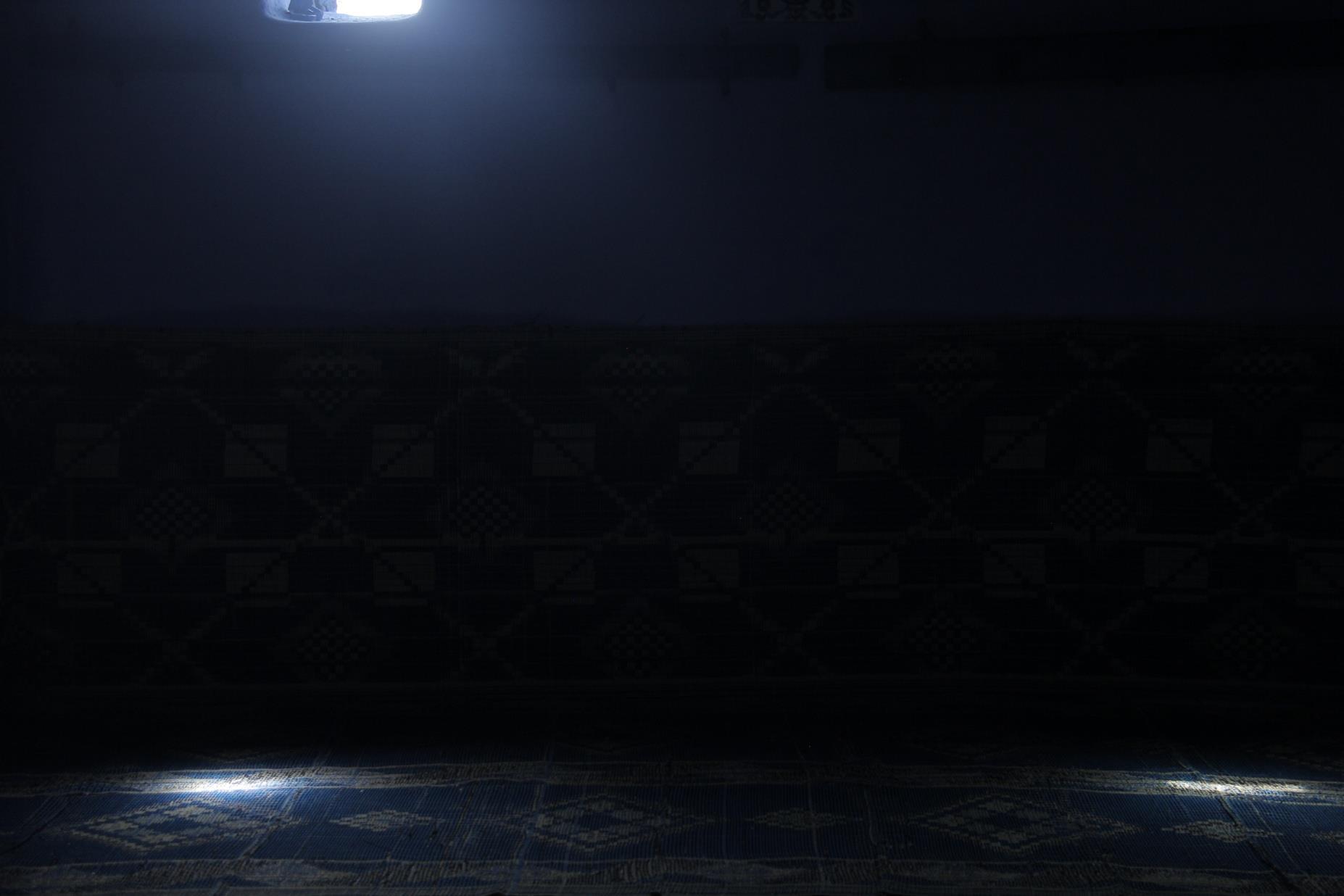In Search of the Spirit of Places: Curator Johan Deurell in conversation with Younès Ben Slimane
Originally trained as an architect, Younès Ben Slimane uses the camera as a poetic tool to explore the built environment. His new film Images de Tunisie, commissioned by the Zaha Hadid Foundation, is an intimate portrayal of Tunisia’s architectural landscape and its vernacular traditions, whilst also commenting on cinematic representations of the French colonial period.
The film opens with black-and-white archival footage sampled from Vingt siècles après, a French 1940s newsreel showing excavations of a historic site in Tunisia. A stenographic voiceover informs us that they are searching in the ashes of a civilisation, but then, the voice fades away to become an abstract soundscape. We are thrown into the contemporary as a camera moves to the accompaniment of footsteps on sandy grounds. At first, we don’t know exactly where the artist is going or what he is looking for. Then his camera roams around, capturing the remains of brick structures under a blazing hot sun. As the sound of footsteps reverberate through the gallery space, it becomes increasingly clear that Ben Slimane is inviting us to walk amongst the traces of history, searching for the spirit of places.
What do you mean by “the spirit of places”?
– In a place, two realities exist in close proximity: that of physical, tangible things, and that of the intangible things of the senses. It’s this duality that drives me to explore the way places operate. I’m interested in places on the margins and the people who inhabit these. Here, hidden stories can emerge. This interest corresponds to my interest in ancestral and contemporary rituals.
There is a sense of people making buildings or building materials in your film. What makes these vernacular practices interesting to you?
-At a time when we are going through a major ecological crisis, it is imperative to question our way of inhabiting the world. With growing awareness of the ravages of the current consumption system, a return to “essential” architecture is becoming a necessity. An examination of the vernacular architecture of southern Tunisia reveals a wealth of solutions appropriate to the local conditions. Vernacular architecture, with its deep roots in local traditions and sensitivity to local resources, the environment and the communities that inhabit them, reminds us of the importance of these fundamental values.
-In my artistic practice, I am interested in the ritualistic processes involved in ancestral skills, such as hands that shape and recreate the earth. They evoke a deep connection to the world. When I film, I try to capture the timeless essence of hands engaged in craft, where the spatial and temporal context is less important, and the tactile and sensory dimension is enhanced.
The title Images de Tunisie is adopted from a newsreel produced by Les Actualités Françaises in 1946. Why are French newsreel documentaries from the last years of colonial rule interesting to appropriate?
-I adopted the title Images de Tunisie because it can have several meanings and prompts questions such as: who creates images, in what way, and how does this shape the narratives embedded in these visual representations?
-These 1940s documentaries were created to serve French propaganda about colonised countries in North Africa, including Tunisia. In the films, crafts and architecture are portrayed in a condescending way and elements perceived and described as “primitive” are highlighted. However, I am interested in them as documents of vernacular architecture. They show aspects of how people lived and worked in these environments.
The newsreels are narrated by disembodied, male and authoritarian voices- How did you work with these?
-The film opens with a clip from Vingt siècles après that serves the idea of my film. Here the voiceover talks about how bodies are turning into ashes, whilst we see the unearthing of a civilisation. The sound editor Médéric Corroyer and I slowed down the speed of the voiceover until it became an abstract sound. For the rest of the film, there are no voiceovers accompanying the archival footage. Therefore, the images become disassociated from their original colonial discourse.
Your new footage is filmed at the same sites as the newsreels but uses different artistic strategies. Can you talk us through these?
-The archival, black-and-white films are shot in an anthropological way using a static camera that pans over, zoom in and zoom out over the scenes. Many of the buildings featured in the newsreels had disappeared or were in a further state of ruin when I revisited. When considering the treatment of the new images, I thought about how the experience of a place itself impacts the images. My logic was to walk through the sites and let myself be guided by existing paths with a handheld camera, like an extension of the body. As I’m filming ruins, earth and clay, I wanted the texture of the colour Super 8 film to bring the earth to life. As for the makers I filmed, I wanted the viewer to get close to the material. For example, the elementary gestures of the brickmakers’ hands in Tozeur resonates with the women artisans’ feet kneading clay in Sejnane.
What happens in the interaction between archival and personal footage?
-When you are reusing archival footage in another temporal, social and political context, you are also reflecting on the cinematic medium itself. Images de Tunisie can be seen as a commentary on the evolution of cinema. By juxtaposing the archival footage with new film, the work questions our relationship with places and their inhabitants, and the way we film them. It explores how our perception and conscience can change and evolve while filming a place, highlighting the nuances of representation.




